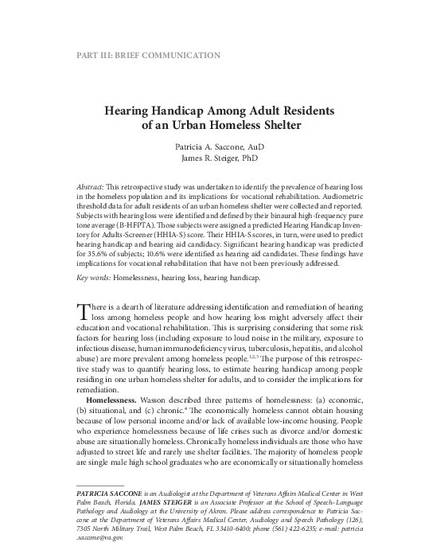
Article
Hearing Handicap Among Adult Residents of an Urban Homeless Shelter
Journal of Health Care for the Poor and Underserved
Document Type
Article
Publication Date
2-1-2007
Disciplines
Abstract
This retrospective study was undertaken to identify the prevalence of hearing loss in the homeless population and its implications for vocational rehabilitation. Audiometric threshold data for adult residents of an urban homeless shelter were collected and reported. Subjects with hearing loss were identified and defined by their binaural high-frequency pure tone average (B-HFPTA). Those subjects were assigned a predicted Hearing Handicap Inventory for Adults-Screener (HHIA-S) score. Their HHIA-S scores, in turn, were used to predict hearing handicap and hearing aid candidacy. Significant hearing handicap was predicted for 35.6% of subjects; 10.6% were identified as hearing aid candidates. These findings have implications for vocational rehabilitation that have not been previously addressed.
Citation Information
Patricia A. Saccone and James R. Steiger. "Hearing Handicap Among Adult Residents of an Urban Homeless Shelter" Journal of Health Care for the Poor and Underserved Vol. 18 Iss. 1 (2007) p. 161 - 172 Available at: http://works.bepress.com/james_steiger/1/
